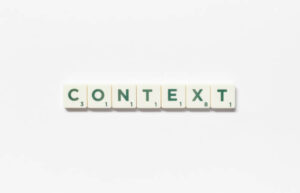I was fortunate to encounter some great trainers early in my recruiting career, and all of them charged me to read books on business, on communication, and on sales. For me, this profession––both a marathon and a brutal contact sport––requires the skill of developing credibility and rapport, the capacity to smell the possibility of a close, and an ability to navigate change and conflict successfully. To stay successful one must continually develop these, the traits inherent to our craft. This quote from Scott Love is one of the best I’ve heard: “Recruiting is personal development disguised as a job.”
Recently I’ve begun to think the most important tool in our toolbox is our mind. When people ask me what makes me successful in business I immediately say my meditation practice – and I know some of you just cringed. Let me assure you I am talking about concrete, sustainable, business results. Over the years I meditated I developed a very different relationship with my mind than I had when I began, and it made me a better recruiter.
That phrase “relationship with my mind” is a good place to start. I suspect most people don’t think much about the fact they have one. Most of us just think. We don’t spend a whole lot of time observing ourselves doing it. Lets agree to set aside questions of who “us” is, and what it means “to think.” I’m going to stay focused on recruiting, not theory, I promise.
An experienced recruiter can chart out the lifecycle of a hire – the main decision points remain the same even as some parts are as different as the people with whom we work. We recognize the taste and texture of potential problems and can forecast hiccups long before they happen.
But rarely do we look at our own minds and assumptions with the same questioning intensity.
I’ve been watching myself think for years now. One of the most interesting phrases I was taught in my meditation practice was this one: “The purpose of the mind is to secrete thoughts.” Minds think. What they think isn’t necessarily true, of course. As I spent time watching my thoughts I noticed how much noise there is, which is illustrated by another useful phrase I learned, “Don’t believe everything you think.” A lot of the stuff that floats through my mind is junk. Some of it is old stuff I know is wrong, and some of it is habitual patterns I don’t even notice unless I am looking. These habits of mind remain unexamined for most of us, but they still shape our behavior. Often these stories harden into the lens through which we see the world. Without the benefit of conscious examination our lens will often be made up of faulty assumptions.
If narratives are how we move through the world, in many ways assumptions are the ground on which we stand. Problems arise when we aren’t aware that the assumptions we make are faulty. The skillful thing is to uncover the assumptions we use to frame our arguments and positions, unpack them, and build a stronger case.
So, What does this have to do with recruiting? Only everything. Lets return to the chart an experienced recruiter can draw – it might start with looking at a resume or an online profile and making a decision regarding calling or emailing that candidate. I have trained my share of recruiters. Asking them to explain why they did or did not engage a candidate is an excellent exercise in how many assumptions we make. “No one would leave that company for my opportunity.” “That guy is too old.” “I don’t see a degree.” “That candidate doesn’t have the right key words.”
Those are obvious assumptions made with too little information that hopefully experienced recruiters avoid, and yet if we are honest with ourselves we all make similar choices – often without thinking. They key is to catch yourself, question the choice consciously, and then make the most skillful decision. This is especially pertinent as we wrestle with diversity issues in hiring. It is a fine balance between screening out candidates who are not a fit, and letting your own assumptions block out perfectly reasonable candidates.
Our business is a fertile ground for conflict. Perhaps life is, in general, but really the complexity of our work and the emphasis on abstractions levels up the potential. Every day I catch myself reacting to a perceived slight, or getting cranky by what I see as bad behavior. Over the years I have opened up a space between my perception and my reaction – meaning sometimes, in observing my mind, I get to choose how I act. This has saved me several tantrums a quarter. Have you ever gotten an email that made you so angry you shake? I have. Often from a clueless internal recruiter who I am convinced is doing everything to piss me off. I’ve learned never to dash off an angry response, which is just standard good business hygiene. Perhaps one of my most fruitful practices has been to go back over old emails – some of which sent me over the moon in anger – and note my response when I am in a different mind state. It is humbling to notice that often the situations that really torqued me off in the past were clearly not an evil jack wagon intent on doing me harm, when I read the exchange a month later I often see myself acting badly. The difference was in how I read them. Once I noticed that I began to question my own ragey reactions more often.
By paying attention to my own habits of mind I’d changed my relationship with reality. I’ve become aware of the limitations of my perspective – that I only see a slice of what is – and that seeking clarity is trying to see the whole picture instead of my limited point of view. This has definitely helped me salvage offers gone awry, relationships with peers and clients, and has helped me stay more serene in challenging times. The more may only be a fraction, but it is a start, and that is why they call it a practice.




